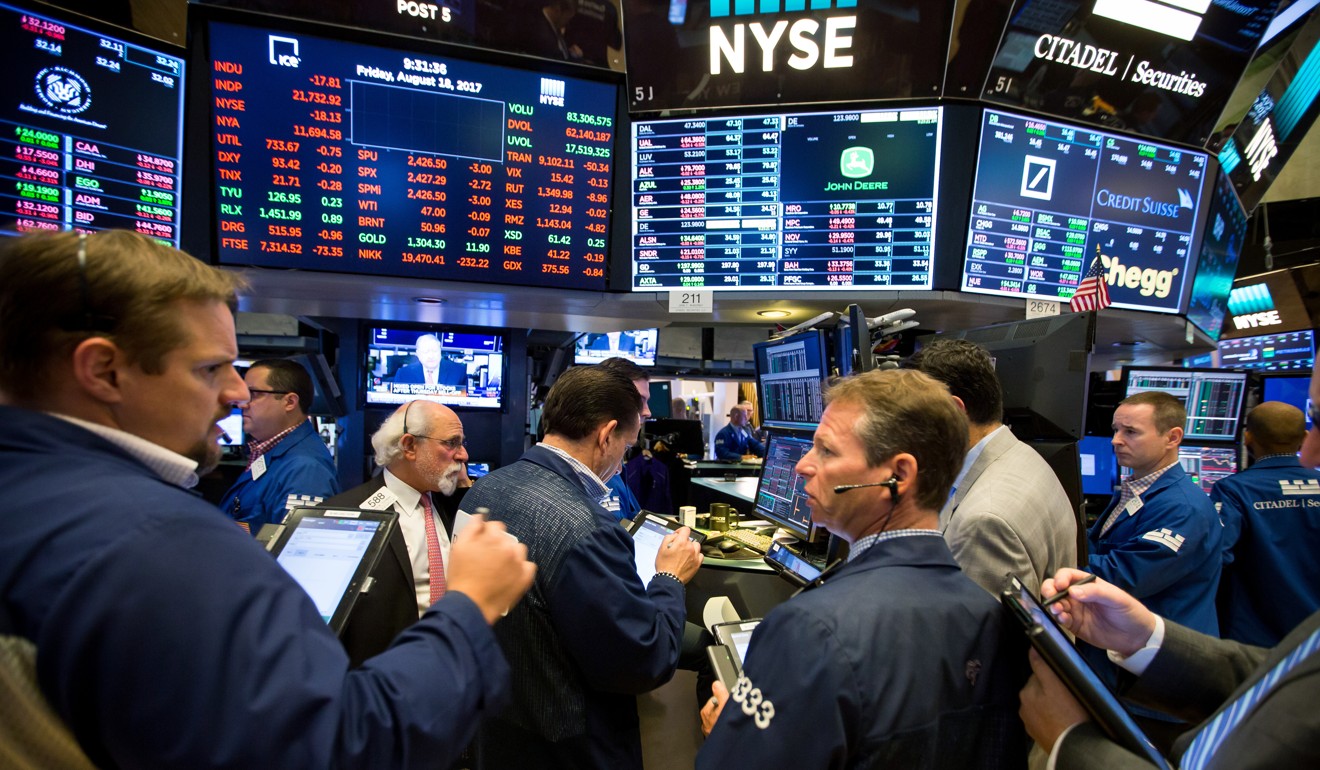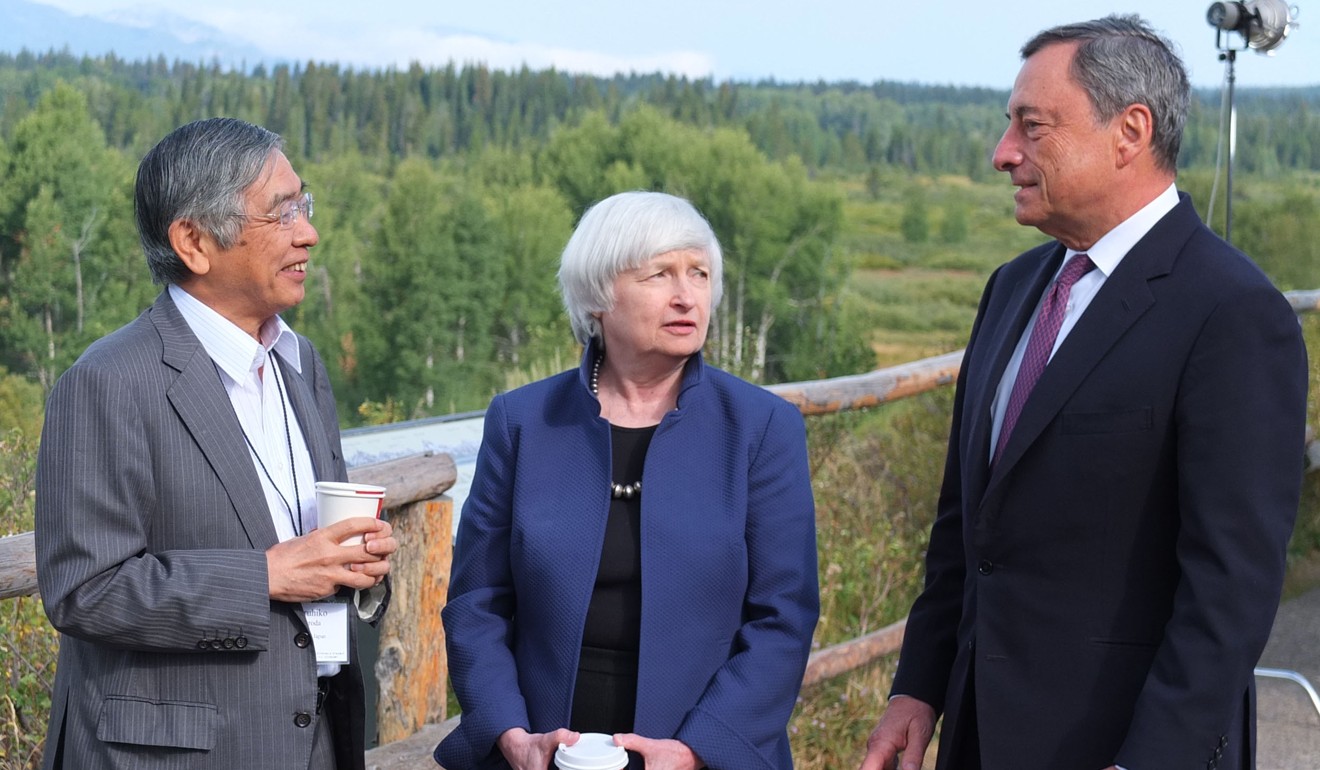
The tech-led bubble is set to burst, despite Janet Yellen’s optimism about financial stability
Andrew Sheng says a debt-fed liquidity flood has global markets on a high as they chase speculative cyber-wealth, but the tide will turn once central banks begin to normalise balance sheets
Nominal financial asset returns this year have already exceeded the long-term average of a balanced portfolio of bond/equity of 7 per cent per year for the 1926-2016 period.
Part of the global optimism, despite geopolitical uncertainties, lies in the fact that there is finally some consensus that the world is undergoing a more broad-based recovery after the 2007-2009 global financial crisis. With the US dollar weakening somewhat and China maintaining stable growth, commodity prices are slowly moving back up.

Yellen rejects complete roll-back by Republicans of financial regulations after 2008 crisis
Those who think that financial crises tend to happen every decade – in 1987, 1997 and 2007 – perhaps forget that some of the worse effects are felt in the following year. For example, the Asian financial crisis reached its peak in 1998, with the speculative attack on the Hong Kong dollar (successfully repelled), and the European debt/Lehman crises that went full-blown in 2008/9, even though subprime problems surfaced in 2007.
Re-reading Charles Kindleberger’s Mania, Panics and Crashes reminded me of his definition of the historical phases of financial crashes. First, there is a period of “displacement”, causing speculation, credit and monetary expansion. Second is a phase of overtrading, financial distress, and perhaps the exposure of fraud and malfeasance. This leads to revulsion, mistrust of shady products and intermediaries, and then panic – as everyone rushes to the crowded exits without parachutes.

Why Fed boss Janet Yellen’s slimming plans matter to Asia
A displacement is defined by Kindleberger as “an outside event that changes horizons, expectations, profit opportunities, behaviour”. In the South Sea Company bubble of 1720, the displacement was the growth in joint-stock companies in Britain. The company was one of the earliest public-private partnerships, given a monopoly on the South American trade (especially the lucrative slave trade), to finance British war efforts against the French, Dutch and Spanish. It engaged in a huge swap of the national debt for its equity, paying off politicians and investors alike with more issuance of equity.
South Sea share prices were propped up by allowing investors to buy on credit. Sound familiar?
In January 1720, its share price was £128, rising to £1,000 in August, not unlike the price behaviour of some tech stocks and bitcoin this year. South Sea share prices were propped up by allowing investors to buy shares on credit. Sound familiar? Inevitably, as the company could not pay its dividend and investors buying on credit had to sell, the share price collapsed back to £100 before the year was out.
China calls for reining in risks in surging bitcoin market
We are in a liquidity flood, founded on the current monetary logic that debt addiction, like that to drugs, can be cured by providing more debt at near-negative interest rate costs. So we have too much money chasing speculative cyber-wealth.
Physicist Isaac Newton, who lost a fortune in the South Sea bubble, said, “I can calculate the motion of heavenly bodies, but not the madness of people”.
I wish I shared Yellen’s optimism that the next financial crisis “will not be in our lifetimes”.
Andrew Sheng writes on global issues, from an Asian perspective

